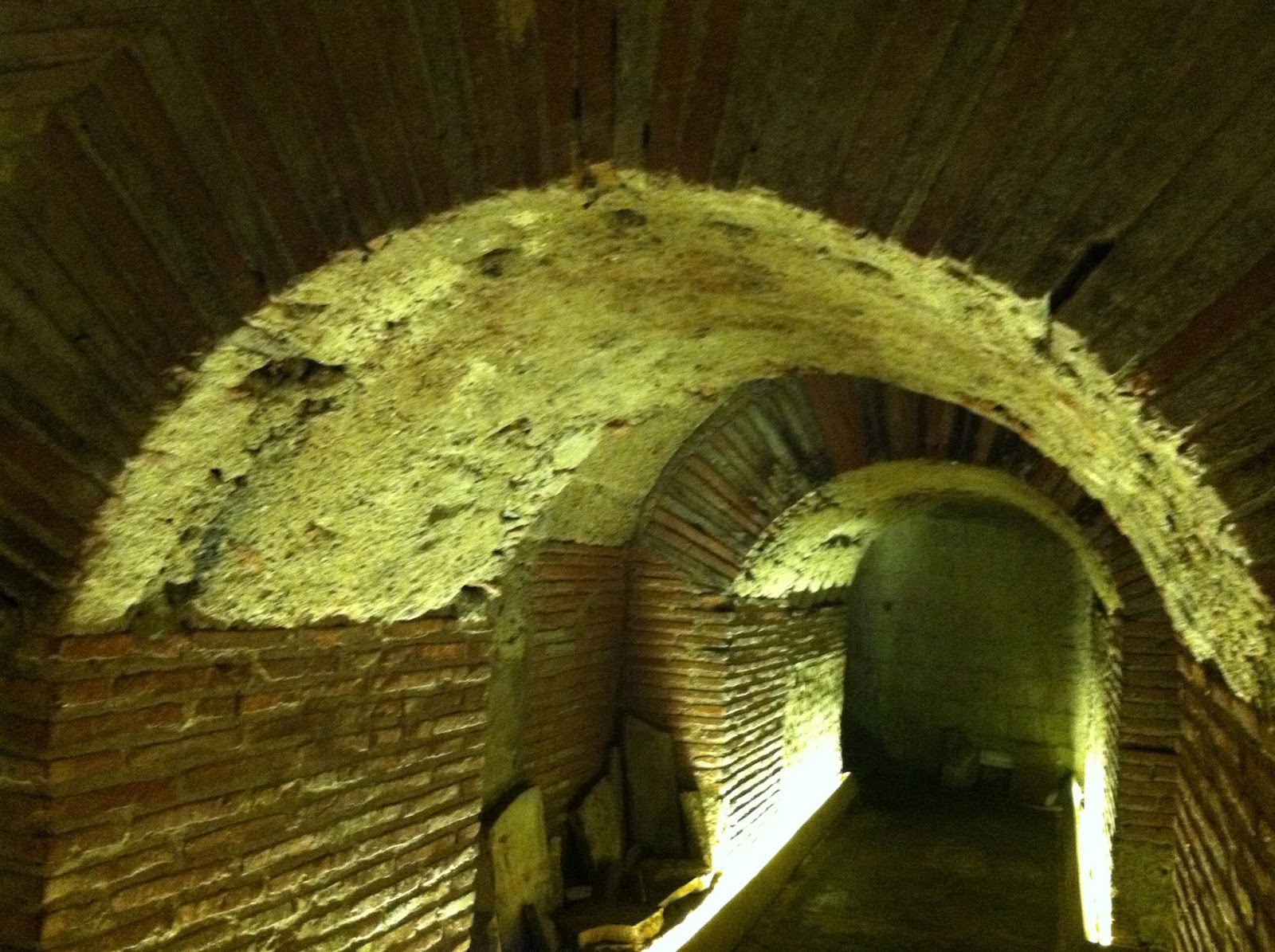First, I visited the Naples National Archeological Museum.
Hercules being a boss.
And the largest statue ever recovered -- the Farnese Bull.
Some of my favorite frescoes.
Behold Athena, the goddess of just about everything: wisdom, courage, inspiration, civilization, law and justice, just warfare, mathematics, strength, strategy, the arts, crafts, and skill (according to Wikipedia). The original total package.
Sometimes the most exciting part is just walking around.
In Piazza Dante, who is often called the father of the Italian language.
Next, I went underground to see Napoli Sotterranea, which was originally built as an aqueduct when the city was establish more than 5,000 years ago. These are some old ass tunnels.
To keep the water running smoothly, the coated the walls with oils. You can see the layering effect.
To keep the water clean, people would climb down a well and use these small hand holds to scale the walls, skimming the water like we do pools.
Some parts were completely dark so we carried candles.
It was hard to capture, but the tunnel was so tight in parts. We couldn't bring any bags and everyone had to turn sideways and scoot through. The smaller tunnels kept the water pressure high.
Now it's a tourist attraction, but during WWII, Neapolitans moved into the aqueducts to take shelter from air raids. They blocked all the wells and created stairs, sometimes living underground for weeks at a time.
After the underground, I took a tour of a long-lost Greco-Roman Theatre. It started in a normal Italian apartment situated on a normal Italian street. An elderly woman lived here for years before archeologists came to the area searching for the theatre. These bricks in her apartment alerted the researchers to the ancient treasure under her bedroom.
To reach her wine cellar, the bed pushed back into the recessed wall and a door appeared underneath. The woman's wine cellar backed up to the ancient dressing rooms where the likes of Nero prepared to take the stage.
The passageway from the dressing rooms to the stage.
This arch supported the highest seats in the theatre. Six similar arches once formed the semi-circular edge of the theatre. This window is in someone's house. Perhaps the most incredible thing about all this history is how Neapolitans simply take it in stride and build right on top of it. This is also because there used to be a law banning the building of houses outside the city walls, so space was at a premium.
I met another girl (an opera singer from Holland!) at Napoli Sotterranea, and we decided our next stop should be the Palazzo Reale, or Royal Palace of Naples.
The main staircase. It was breathtaking. And I was really glad we asked for audio guides -- it seemed like every little thing was symbolic for something.
Pure decadence. Every square inch was dripping with luxury.
Il Trono.
Sometimes the ceilings were the best part.
Or maybe the view of the Bay of Naples was the best part... Either way, about the time we walked through the queen's third antechamber, I realized it was good to be queen. Check out Vesuvius on the left.
My favorite paintings in the royal collection were these depictions of everyday life as it was.
The nosebleeds in the royal theatre. Not bad at all.
The girl I met wasn't exactly a photographer.
Next, we walked down to the sea to visit one of the castles. Unfortunately, it closed early on Sundays, but we still had a nice stroll along the bay.
Hopefully I'll get to go inside the castle next time! Overall, a really amazing weekend.
This past weekend, I met up with the opera singer again and we had the best pizza I've ever tasted:






























